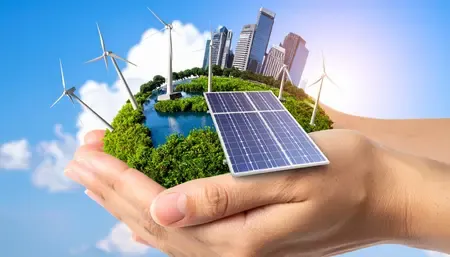Has India Achieved a Milestone with 51% Green Energy Capacity?

Synopsis
Key Takeaways
- India's total installed electricity capacity has surpassed 500 GW.
- Over 51% of this capacity is derived from non-fossil fuel sources.
- Solar power leads the renewable segment with 127.33 GW.
- On July 29, 2025, India achieved a record 51.5% of total electricity from renewable sources.
- These advancements align with India's COP26 objectives, achieved five years ahead of schedule.
New Delhi, Oct 29 (NationPress) The power sector in India has marked two significant milestones that demonstrate the country's unwavering journey towards a clean, secure, and self-sufficient energy future.
As of September 30, 2025, the total installed electricity capacity in the nation has surpassed 500 GW, reaching an impressive 500.89 GW. This remarkable achievement is a testament to years of robust policy support, substantial investments, and collaboration within the energy sector, as stated by the Ministry of Power on Wednesday.
Sources of non-fossil fuels, including renewable energy, hydro, and nuclear, now represent a substantial 256.09 GW, which constitutes over 51 percent of the overall capacity.
Conversely, fossil fuel sources like coal account for 244.80 GW of electricity production in India, resulting in approximately 49 percent of the total.
Within the renewable energy landscape, solar power leads with a significant share of 127.33 GW, followed by wind power at 53.12 GW.
During the fiscal year 2025–26 (from April to September 2025), India added 28 GW of non-fossil capacity alongside 5.1 GW of fossil-fuel capacity, highlighting the rapid increase in clean energy's contribution, as noted in the statement.
On July 29, 2025, India achieved its highest-ever share of renewable energy in electricity generation. On that day, renewables fulfilled 51.5 percent of the country's total electricity demand of 203 GW, with solar contributing a remarkable 44.50 GW, wind power generating 29.89 GW, and hydro power producing 30.29 GW.
This signifies that, for the first time, over half of India’s electricity came from green sources in a single day, marking a significant transformation, as per the statement.
With these advancements, India has reached one of its key COP26 Panchamrit targets—achieving 50 percent of installed electric power capacity from non-fossil fuel sources five years ahead of the intended deadline set for 2030.
This accomplishment underscores India’s leadership in the transition to clean energy, accomplished while maintaining a stable and reliable electricity grid, as highlighted in the statement.
India’s push for renewable energy is generating new job opportunities in manufacturing, installation, maintenance, and innovation, providing benefits to both rural and urban youth, as stated.









